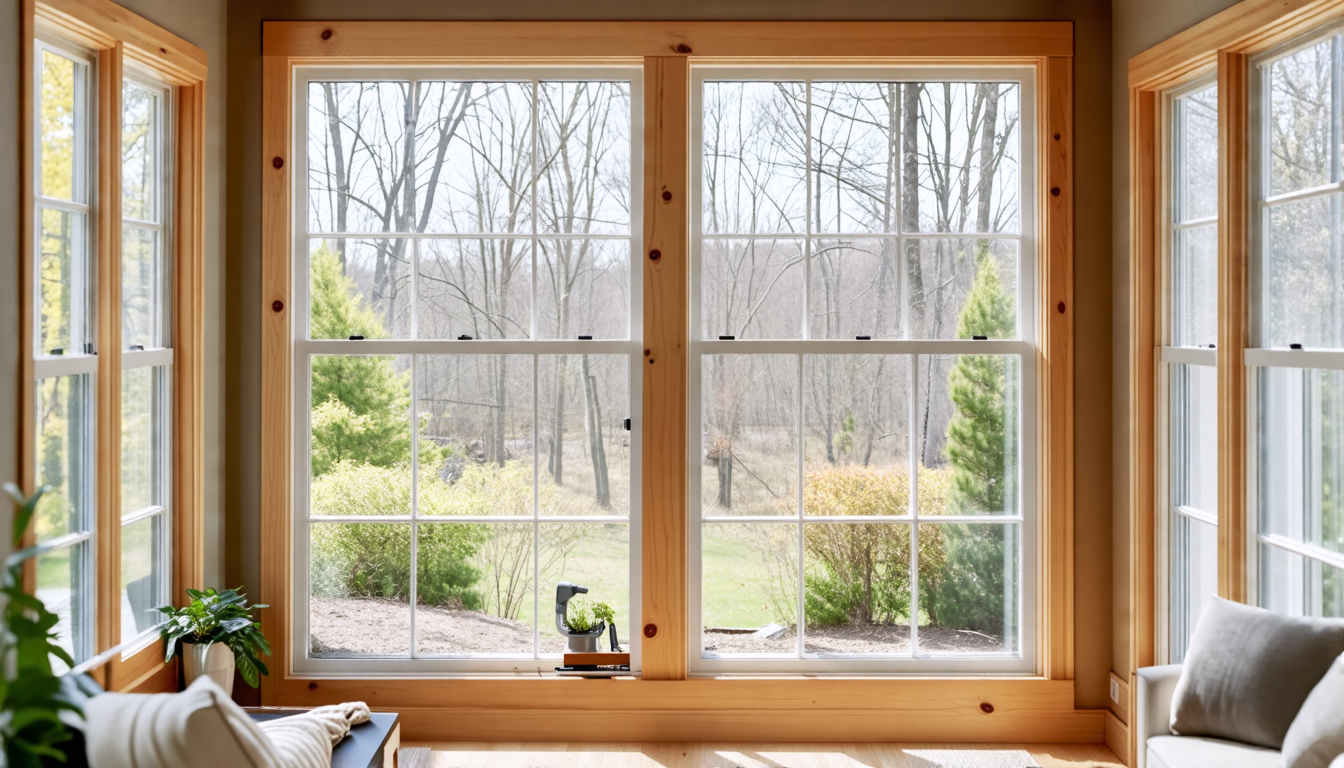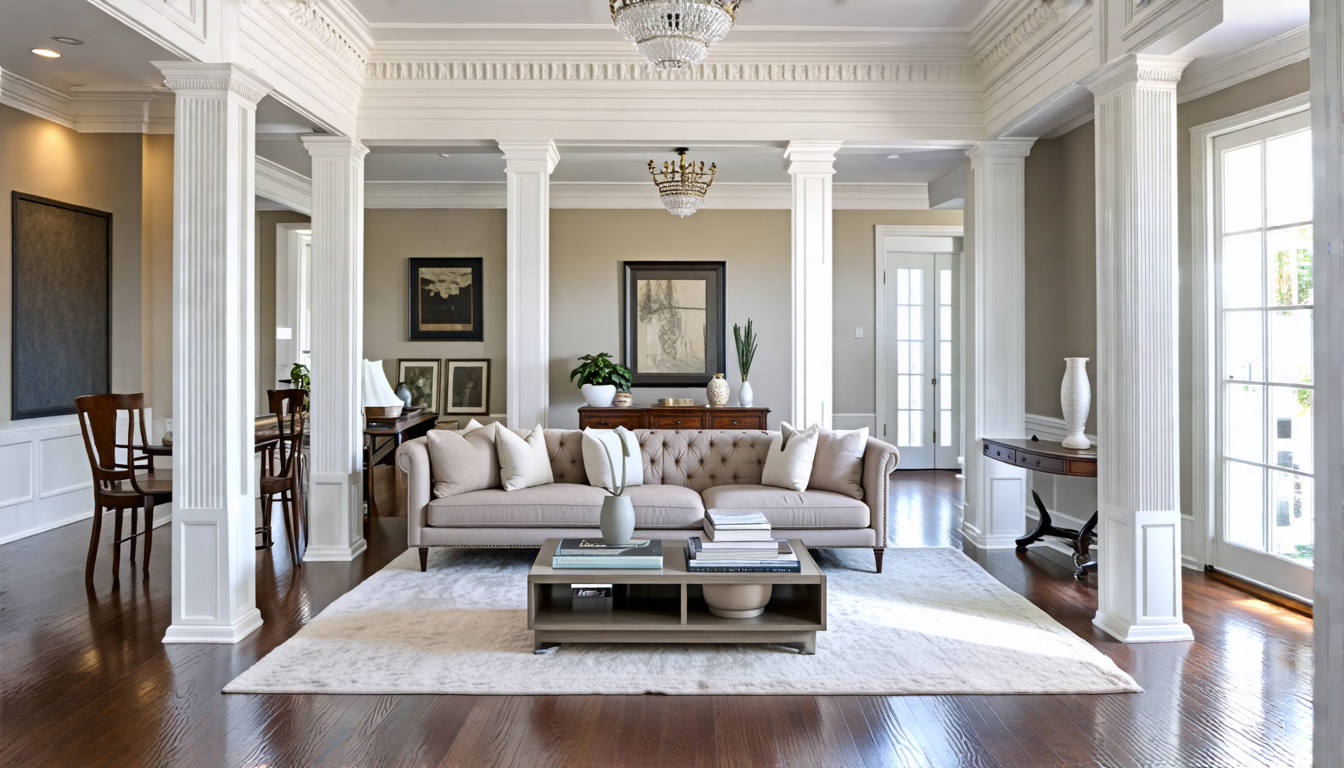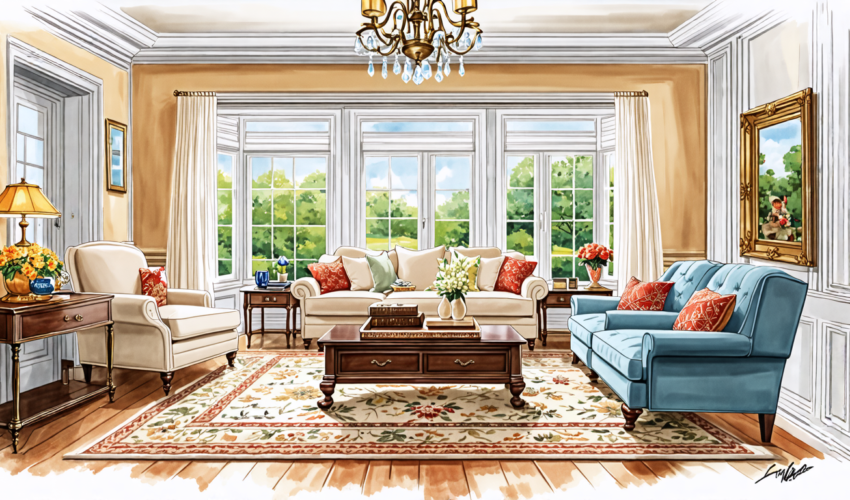Transform your living space with the timeless elegance and functional beauty of trim and molding. These architectural elements have long been celebrated for their ability to elevate home aesthetics, providing depth, character, and sophistication to any room. In this comprehensive guide to trim and molding, we delve into the diverse types and materials available, offering valuable insights for homeowners eager to enhance their interiors. From the classic appeal of crown molding to the practical charm of baseboards and chair rails, discover the distinct purposes each style serves in home design. Learn about the materials that bring these elements to life—whether it’s the natural warmth of wood, the affordability and versatility of MDF, or the durability of PVC—each option presents unique advantages suited to different needs and preferences. Our guide doesn’t stop there; for those adventurous DIY enthusiasts ready to take on a home improvement project, we provide detailed installation tips and techniques to ensure a flawless finish. Navigate common challenges like cutting corners and achieving seamless joins with ease and expertise. Beyond mere aesthetics, strategic use of trim and molding can significantly enhance your property’s value, making it a smart investment for the future. We offer design inspiration to seamlessly integrate these features into both modern and traditional home themes, ensuring your space reflects your personal style while increasing its appeal. Whether you’re a homeowner looking to make impactful changes or simply curious about the potential of trim and molding, our guide is your go-to resource for beautifully transforming your home.
Understanding Trim and Molding: Types and Materials
Trim and molding are architectural elements that play a crucial role in home design, contributing both functionality and aesthetic enhancement. Let’s explore the various types of trim and molding, such as crown molding, baseboards, and chair rails, each serving distinct purposes in elevating interior spaces. Additionally, we will delve into the different materials for trim and molding, including wood, MDF, and PVC, highlighting their respective pros and cons to help you make informed decisions for your home improvement projects.
Types of Trim and Molding
Understanding the types of trim and molding available can empower homeowners to choose the right elements to accentuate their living spaces. Here are some popular varieties:
Crown Molding
Crown molding is a decorative element that gracefully bridges the gap between walls and ceilings, adding elegance and a polished finish to any room. It’s commonly employed in dining rooms and living areas where sophistication is desired. Crown molding can vary in style, ranging from simple curves to intricate patterns, allowing you to select an option that aligns with your design aesthetic.
Baseboards
Baseboards serve as the foundation of any room, installed at the junction where walls meet the floor. They play a practical role in protecting walls from damage and covering any gaps between flooring and walls. Beyond their functional purpose, baseboards also contribute to a room’s charm, offering a subtle yet significant enhancement. They are available in numerous styles and heights to match the overall theme of your home.
Chair Rails
Chair rails are horizontal moldings typically positioned around 3 feet off the ground. Initially designed to protect walls from chair backs, they now have more of a decorative function, allowing for creative wall designs and the division of contrasting paint colors or wallpaper patterns. Chair rails add a layer of dimension and visual interest, making them a versatile choice for any room.
Materials for Trim and Molding
The selection of material for trim and molding dramatically influences both the appearance and the lifespan of the finish. Here is an overview of the most commonly used materials:
Wood
Wood is a traditional choice for trim and molding, favored for its natural beauty and versatility. It can be painted or stained to match existing décor and offers a timeless appeal. Options like oak, pine, and maple provide a range of grain patterns and hues. One downside to wood is its susceptibility to warping or expansion in response to humidity changes. However, its durability and classic aesthetic makes it a preferred choice for many homeowners.
MDF (Medium-Density Fiberboard)
MDF is a cost-effective alternative to wood, made from wood fibers and resin. It offers a smooth surface that is ideal for painting, making it a universal choice for various applications. MDF does not have natural grain patterns, which can be a limitation for those seeking a natural wood look. Additionally, it is more susceptible to damage from water and moisture, which restricts its use in areas prone to dampness.
PVC (Polyvinyl Chloride)
PVC is a synthetic plastic material boasting resistance to water, rot, and insect damage. It is a perfect choice for bathrooms, kitchens, and other high-moisture areas. PVC trim and molding can mimic the appearance of wood, though they lack the authentic feel of natural materials. They are easy to install and maintain, though they can be more expensive than MDF. Despite this, PVC’s resilience and low maintenance requirements make it an appealing choice for many.
When undertaking a project involving trim and molding, your choice between these various types and materials should consider factors such as design aesthetic, budget, and room function. By carefully evaluating each option, you can achieve a harmonious balance that elevates the overall look and feel of your home.

Installation Tips and Techniques for Trim and Molding
Installing trim and molding in your home is a rewarding project that can dramatically enhance the aesthetics of any room. A well-executed installation not only brings added visual interest but also increases the overall value of your property. Whether you’re a seasoned DIY enthusiast or a homeowner looking to delve into home improvement projects, understanding the process and techniques of how to install trim and molding is crucial for achieving the perfect finish.
Step-by-Step Installation Process
Before starting your project, gather all the necessary tools and materials. You’ll need a tape measure, miter saw, finish nails, a level, a coping saw, adhesive, a nail gun, and protective eyewear. These tools will ensure precision and safety throughout the process.
1. Measuring and Planning
Begin by accurately measuring the length of the walls where the trim or molding will be installed. It’s essential to double-check your measurements to avoid any waste and ensure a precise fit. Plan for an additional 10% in materials to account for any mistakes or adjustments during installation.
2. Cutting the Trim and Molding
Using a miter saw, cut the trim or molding to your pre-determined lengths. For corners, a 45-degree angle cut is usually necessary to ensure a snug fit. A tip: always cut slightly longer than needed; it’s much easier to trim down than to add length.
3. Prepping the Installation Area
Remove any existing trim and prep the wall surface. Ensure the wall is clean and smooth. Apply primer to your trim if it’s made of material that requires it, such as MDF, to prepare it for painting or finishing.
4. Attaching the Trim and Molding
Begin at one corner of the room and work your way around. Use adhesive and a nail gun to secure the trim to the wall. Make sure to use a level to guarantee a straight line. Place nails at regular intervals to ensure stability.
5. Sealing and Finishing
Once your trim and molding are in place, fill in any gaps or nail holes with caulking or wood filler, allowing it to dry completely before sanding smooth. Finally, apply your chosen paint or finish to achieve a professional look.
Insider Tips for Tackling Common Challenges
Installing trim and molding can present a few challenges, especially around corners and seams. Fear not, as these insider tips will help you breeze through tricky spots with confidence.
Cutting Corner Joints
One of the most formidable tasks is cutting precise corner joints. A compound miter saw is invaluable for this, allowing you to make the necessary angled cuts with ease. Pro Tip: Practice makes perfect. Use scrap pieces to practice your cuts before moving on to the actual molding.
Making Seamless Joins
Seams can be a dead giveaway of an amateur installation. To achieve a seamless look, make sure your cuts are precise, and use adhesive and fine finish nails to minimize the visibility of joints. Caulking also plays a crucial role in achieving that flawless transition.
Adapting to Wall Imperfections
Not all walls are perfectly straight, and variations can make installation challenging. Use builder’s shims to adjust for any irregularities in the surface. Align your trim and molding with a level to avoid following an uneven wall line that can compromise the finish.
Dealing with Material Expansion
Materials like wood can expand or contract with changes in temperature and humidity. To prevent issues, acclimate your trim and molding materials in the room where they’ll be installed for at least 48 hours.
Conclusion
By incorporating these installation techniques, you can ensure a flawless finish for your trim and molding projects. Understanding the methods of how to install trim and molding will not only boost your home’s aesthetics but will also reflect the care and dedication you’ve put into creating a beautiful living space.
To delve deeper into more advanced tips and to find out more about different types of trim and molding materials, keep exploring this comprehensive guide.

Enhancing Home Aesthetics and Value with Trim and Molding
The strategic use of trim and molding can significantly transform the aesthetics of home interiors, offering both a refined finish and a boost in property value. By investing in quality trim and molding, homeowners can highlight architectural details and enhance the overall decor scheme. This section explores how these elements can breathe new life into living spaces and provide tangible value to a home, appealing to both modern and traditional tastes.
Transforming Home Interiors
Incorporating trim and molding is like adding the perfect accessory to an outfit—it completes the look and elevates the space. Crown moldings can draw the eye upward, making ceilings appear higher and lending an air of sophistication to any room. Baseboards provide a clean transition between walls and floors, protecting against scuffs while adding an element of polish. Meanwhile, chair rails offer both functional and decorative purposes, shielding walls from furniture damage while breaking up wall spaces to allow for creative two-tone paint or wallpaper applications.
Trim and molding also serve to enhance architectural features, such as windows and doors. Casings around these elements not only frame them elegantly but also contribute to a unified look throughout the home. Wainscoting, which covers the lower portion of walls, can introduce pattern, texture, and depth, especially in formal areas like dining rooms or entryways.
Adding Value to Your Property
Beyond aesthetics, trim and molding can increase a home’s marketability. Potential buyers often appreciate detailed craftsmanship and thoughtful design choices. Homes with well-executed moldings and trims tend to give the impression of higher quality and attention to detail, which can translate into a higher perceived value.
When choosing moldings, it’s crucial to consider the home’s style. For historic homes, period-accurate moldings can restore charm and authenticity, appealing to buyers interested in preserving historical integrity. In contrast, clean, minimalistic trim styles might be more suited to modern homes, emphasizing sleek lines and understated sophistication favored in contemporary design.
Design Inspiration and Styling Tips
For those embarking on a home improvement project, inspiration abounds. In modern spaces, less can be more. Consider using intricate crown moldings only in formal areas or opt for thin baseboards in combination with wide-plank wooden floors to create a streamlined look. Pairing recessed panel wainscoting with cool paint hues can also yield a stunning minimalist approach.
Traditional homes can benefit from more ornate styles. High-relief moldings with detailed carvings can capture a period look. Layering moldings—stacking baseboards, wainscoting, and crown moldings—can build a complex, rich visual that complements the ornate stylings often found in older homes.
Don’t hesitate to experiment with paint colors and finishes to highlight moldings. White trim against a colored wall provides a classic look, but bold choices, like dark or contrasting colors, can make a dramatic statement, notably in transitional spaces like hallways or stairwells.
Choosing the Right Styles for Your Home
Ultimately, the key to enhancing your home’s aesthetics with trim and molding lies in making choices that harmonize with your home’s architectural style while reflecting your personal taste. Start by assessing the existing design elements within your home. Establish whether you wish to remain true to the architectural era or lean into an eclectic mix of styles.
Remember, the goal of trim and molding is not only to add aesthetic value but to accentuate and enhance the functionality and character of your home. Whether opting for subtle or statement-making choices, integrating trim and molding thoughtfully will ensure your home stands out in beauty and value.
In conclusion, understanding and utilizing trim and molding can significantly enhance the aesthetic appeal and value of your home. By familiarizing yourself with the various types and materials—ranging from the classic elegance of wood to the affordability and versatility of MDF and PVC—you can make informed decisions that align with both your design aspirations and practical needs. Each material has its own set of advantages and challenges, and selecting the right one is crucial for achieving the desired outcome.
The installation process, while initially daunting, can be managed with careful preparation and the right tools. By following detailed installation techniques and employing tips for overcoming common obstacles such as cutting accurate corners and achieving seamless joins, even DIY enthusiasts can achieve professional-looking results. Mastering these techniques will not only boost your confidence but also ensure a high-quality finish that stands the test of time.
Beyond mere functionality, trim and molding play a transformative role in elevating home interiors, allowing for the enhancement of architectural details and increasing property value. Whether you’re aiming for a modern minimalist look or a more traditional feel, thoughtful integration of trim and molding can provide cohesion and style to your space. Drawing inspiration from various design ideas ensures that these elements complement and elevate your home’s overall theme.
Ultimately, by leveraging the power of trim and molding, you can create spaces that are not only visually appealing but also reflect your personal style and commitment to quality, ensuring a home that is both beautiful and valuable.

